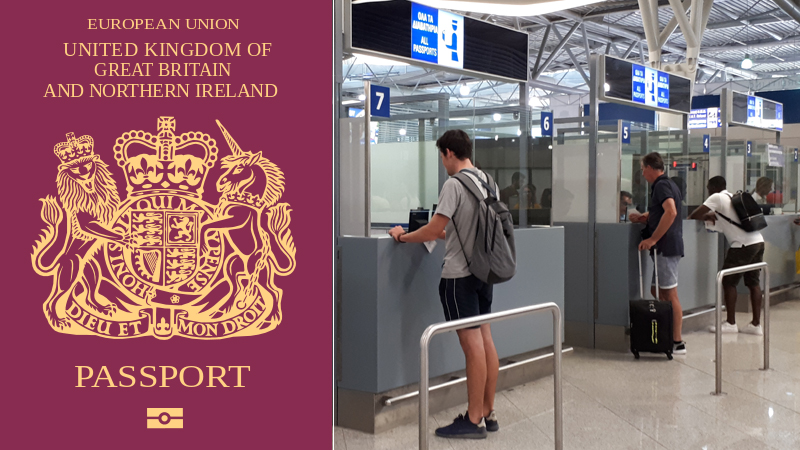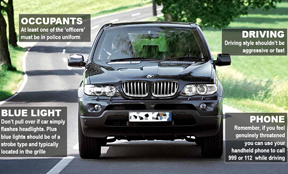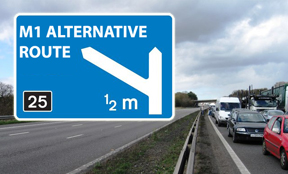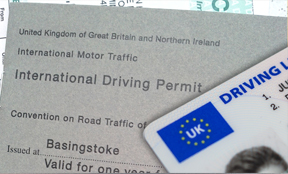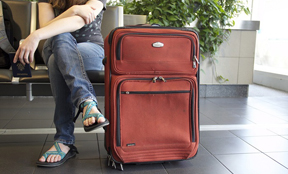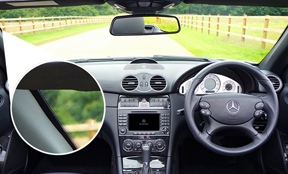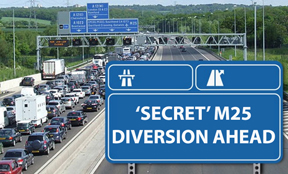
For British travellers driving from Calais or Dunkirk to the south of France, traffic congestion around Paris can be a huge problem. Endless jams, confusing signs, and the infamous Périphérique ring road are enough to ruin the start of your trip.
But there’s a smarter way round the capital — and it’s called the A86 Duplex Tunnel. This double-decker tunnel runs under the western suburbs of Paris and lets you bypass most of the congestion in under 10 minutes. It’s fast, quiet, and avoids the stress of driving through central Paris — but it only works if your car meets the rules.
Here’s how to use it, what it costs, and why it could save your holiday.
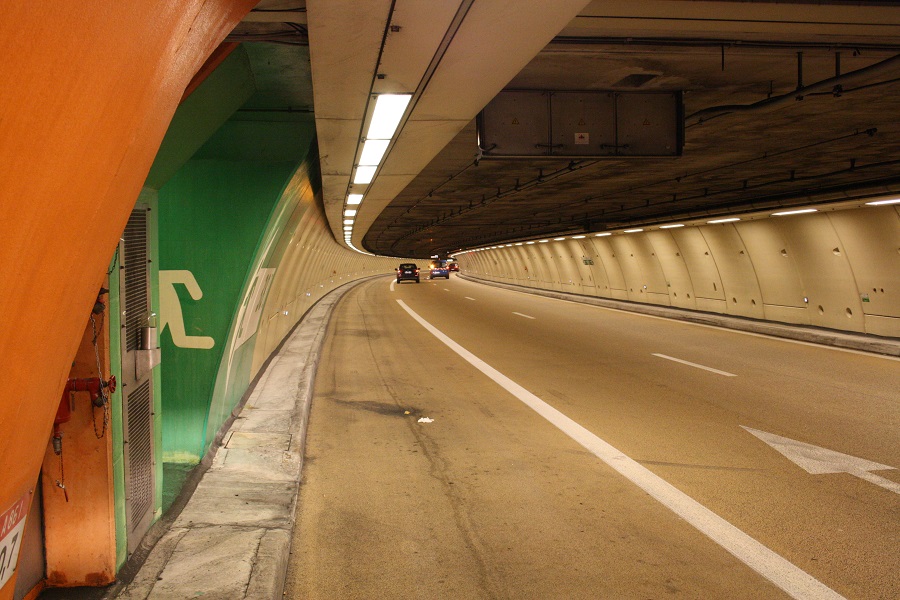 The Duplex A86 Tunnel is a great way to beat congestion when getting
around - or under Paris (Photo by Lionel
Allorge on Wilkipedia)
The Duplex A86 Tunnel is a great way to beat congestion when getting
around - or under Paris (Photo by Lionel
Allorge on Wilkipedia)
What is the A86 Duplex Tunnel France?
The A86 Duplex Tunnel is a 10 km toll tunnel under western Paris, forming part of the outer ring road (A86 autoroute). It runs from Rueil-Malmaison (near the A13) to Jouy-en-Josas (near the A10 and A6).
Unlike most tunnels, it’s split across two decks with traffic flowing in opposite directions. It's only open to light vehicles under 2 metres tall — that includes most family hatchbacks, estates and saloons, but not high SUVs, vans or cars with roof boxes.
It was designed as a ‘quiet’ tunnel — meaning it’s low-emission, strictly limited to 70 km/h and not open to motorbikes or LPG cars.
How British drivers from Calais can use the Paris bypass tunnel
If you’re coming off the ferry at Dover or the Eurotunnel at Folkestone, here’s how to reach and use the A86 Duplex Tunnel:
-
Follow the A16 and A26 to reach the A1 southbound towards Paris.
-
Join the A13 west of Paris (signed Rouen/Versailles).
-
Pick up the A86 at Rueil-Malmaison.
-
Enter the Duplex Tunnel heading south.
-
Exit near Jouy-en-Josas to join the A10 or A6 — both lead directly to southern France.
This route avoids the inner Paris ring road entirely, keeping you on motorways with far less risk of traffic jams, wrong turns or Parisian chaos.
Is your car allowed in the A86 Duplex Tunnel?
The tunnel has strict rules — not all British cars will be allowed through. Here’s what you need to check:
-
Vehicle height must be under 2.00 metres.
That includes roof boxes, bike racks and aerials. -
Weight must be under 3.5 tonnes.
Most cars are, but campervans and vans may be too heavy. -
No LPG fuel systems.
Even if you’re running petrol, if the car is capable of using LPG, you can’t go through. -
No motorbikes, scooters or mopeds.
If in doubt, check your logbook (V5C) or measure your car height including any extras before setting off. If you’re over 2 m, you’ll need to use the regular A86 surface roads or the A12/N286 route instead.
What does it cost to use the A86 Duplex Tunnel?
Tolls vary by time and distance, but here’s what most UK drivers can expect to pay:
| Time / period | Estimated toll (€) | Approx. in £* |
|---|---|---|
| Off-peak / night / weekend | €1.60 | ~£1.40 |
| Typical weekday hours | Up to €14.50 | ~£12.50 |
| Peak-time (weekday rush) | €9.00 – €14.50 | ~£7.70 – £12.50 |
| Average standard car one-way | ~€10.00 | ~£8.50 |
Payment is by card or télépéage (Liber-t / Emovis tag). There's no cash booth.
You’ll usually be charged for the full length of the tunnel unless your entry and exit are both short segments.
For guidance only - please check current prices before travel.
Why British drivers should use the A86 Duplex Tunnel
-
Avoid Paris traffic and the Périphérique nightmare
Stay on motorways and avoid confusing city roads and jams. -
Faster route to the A10 and A6 for southern France
Ideal if you're heading to Bordeaux, the Loire, the Dordogne or the Riviera. -
Less stress after a long drive from Calais
No need to navigate the unpredictable Paris ring road system. -
Cleaner, quieter and more relaxing
The tunnel is designed for calm, low-emission motoring.
France driving checklist if you're using the tunnel
Make sure your car and documents are in order before hitting the road:
-
Vehicle height under 2 m (check roof boxes!)
-
No LPG or banned fuel systems
-
Valid passport and UK driving licence
-
UK sticker on the rear of your vehicle (or UK plate)
-
Crit’Air emissions sticker (if heading into low-emission zones)
-
Headlamp converters fitted (if applicable)
-
Reflective vests, warning triangle and spare bulbs in car
-
Proof of insurance (and green card if requested by your provider)
Tips for British drivers using the A86 Duplex Tunnel
-
Update your sat nav or route planner so it knows your vehicle height and avoids restricted tunnels if needed.
-
Avoid rush hours (7–10am and 4–7pm weekdays) for cheaper tolls.
-
Don’t blindly follow Google Maps or Waze — they may route you through the tunnel even if your car’s not legal.
READ MORE ON DRIVING IN FRANCE
Take a look at more of our top motoring-related content here...
-
SIGN OF THE TIMES: Find out what a white diamond sign means in France
-
BEWARE: Find out the drink and drug driving rules for France
-
SPEED TIPS: Do I get points on my licence if caught speeding in France?
-
PLUG-IN: Find out about charging electric cars in France
-
SECRET SPEED CAMERAS: Look out for undercover speed camera cars
-
CRIT-ICAL INFORMATION: Do British drivers still need Crit'Air stickers to drive in France?
-
GET YOUR FILL: Interactive map to find the cheapest petrol stations near you in France
-
PERMIT TO DRIVE: Find out why you may need an International Driving Permit for France
-
SHARING LANES Paris car sharing lanes explained - don't get fined
Driving in France checklist for UK drivers
Here's a quick checklist for UK drivers planning to drive in France
| Item | Required? | Notes |
|---|---|---|
| Full UK Driving Licence | ✅ Yes | Both paper and photocard if applicable |
| Vehicle V5C logbook or VE103 | ✅ Yes | Proof of ownership – more on VE103 |
| Valid Insurance (with EU cover) | ✅ Yes | Check with your provider for confirmation |
| Passport | ✅ Yes | Must be valid for at least 3 months after return |
| Travel Insurance | 🔲 Advised | Helps cover unexpected medical or trip issues |
| MOT certificate | ✅ Yes | For vehicles over 3 years old – check your renewal date |
| Reflective jackets (one per occupant) | ✅ Yes | Must be within reach (not in the boot) |
| Warning triangle | ✅ Yes | Legally required |
| Headlight beam deflectors | ✅ Yes | Required even for LED lights |
| UK sticker/identifier | ✅ Yes | Needed unless UK plates have Union Jack |
| Spare bulb kit | 🔲 Advised | Not a legal requirement but useful |
| Breathalyser kit | 🔲 Advised | Not enforced, but still recommended |
| Sat nav without speed camera alerts | ✅ Yes | Disable alerts for camera locations |
| Credit/debit card or cash for tolls | ✅ Yes | Many motorways are tolled |
| Emission sticker (Crit’Air) | 🔲 Sometimes | See more on Crit'Air here |
| Drive on the right-hand side | ✅ Yes | Pay extra attention at roundabouts |
| Speed limits adjust in wet weather | ✅ Yes | Limits drop – always check signs |
| Drink and drug driving rules | ✅ Yes | Strict rules apply |
| No use of hands-free earpieces/headphones | ✅ Yes | Illegal to use in France |
| European Breakdown Cover | 🔲 Advised | Very useful if you break down abroad |
| Paper map or offline GPS | 🔲 Advised | Helpful in rural areas with poor signal |
| EHIC/GHIC card | 🔲 Advised | Free or reduced-cost state medical care in EU |
Subscribe for free motoring and travel news here - support independent journalism
Most read motoring content
Take a look at more of our top motoring-related content here...
-
How to spot a fake undercover police car
-
Do I need to pay the Dartford Crossing charge on Sundays?
-
Will I get a speeding ticket after being flashed
-
Secret parking offences you're committing revealed
-
Alternative routes for beating jams on the M25
-
Alternative routes for the M1 motorway
-
Alternative routes for the M6 motorway
-
How old are my tyres - find out instantly here
-
What are the black dots on my windscreen for?
-
Are my sunglasses legal for driving?
Author: Pete Barden:
Twitter: @pete_barden
Pete Barden is a qualified journalist who has written and produced for publications including The Sun (thesun.co.uk), New Statesman Media Group, Whatcar? (Whatcar.com) Stuff Magazine (Stuff.tv), Fastcar Magazine (Fastcar.co.uk), Maxim Magazine and UK broadcast stations within the Heart network (Formerly GCAP). Pete specialises in motoring and travel content, along with news and production roles. You can find out more about Pete Barden on LinkedIn.






